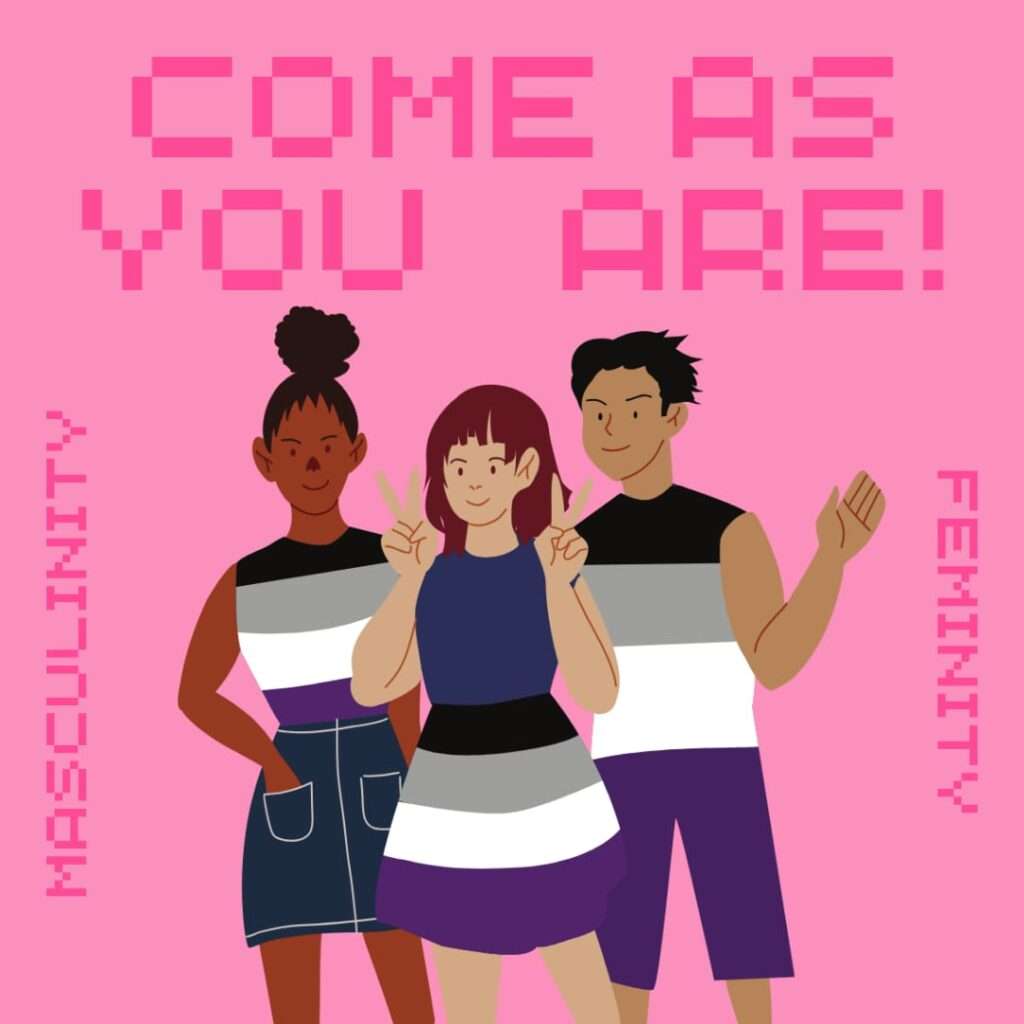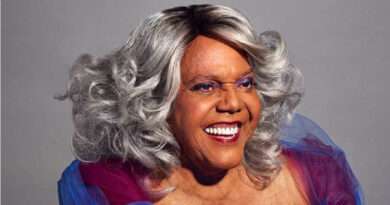Unpacking Asexuality’s Complex Dance with Gender
When I came out as asexual to my friend, she thought reassuring that the phase would
pass is the best path. However, after some explaining my allo cis het friend accepted
me and I wish I could say that it was my happy ending. But she also believed that while
I can be asexual, it’s impossible for a man, unlike me, to be asexual. As an
experienced straight person, she claimed to know men better than me. So can we talk
about asexuality without talking about masculinity?
For men, sexual conquest of women is a key tool for performing and claiming
masculinity, while chastity and sexual purity have been more closely aligned with
traditional, conservative notions of femininity. As crude and harmful as these cultural
notions are, they are powerful ideas that shape our experience of both gender and
sexuality. And they raise questions about how asexuality fits within mainstream
conceptions of gender.
Research on the relationship between asexuality and gender is limited, but existing data
suggest that asexuality is a deeply gendered identity. Surveys indicate that women far
outnumber men in identifying as asexual.

Some people believe that it is more difficult for men to identify as asexual than it is for
those of other gender identities and that masculinity poses greater problems than
femininity in identifying as asexual. But aren’t we dismissing the struggles of femininity
in discussing masculine aspects? When perusing popular online gathering spaces for
asexual individuals such as AVEN’s discussion boards and asexuality-focused
subreddits as well as at an A-Spec group at my local LGBTQ+ Centre, masculinity
dominates conversations more than feminity. It is interesting, considering that men
appear to be far outnumbered by both women and people who are neither men nor
women in identifying as asexual.
There’s no doubt that tensions exist between masculinity and asexuality. Sexual voracity
is seen as part and parcel of what it means to be a man. The brain of man, we are told,
is in his groin. Some men are strong enough to resist the manly urge- sex, sex, sex- but
men’s libido is supposedly so untamed that resisting it is futile. Boys will be boys is a
common phrase.
Such an ingrained assumption of men’s hypersexuality undoubtedly leads some to
shrug off men who do not experience sexual attraction as unnatural, if not impossible.
As a result, men who identify as asexual risk ridicule, dismissal, and pathologization.
And it makes sense that at least some men would manage this risk by keeping their
asexuality private, that these harmful cultural ideas would contribute to aphobia and
asexual erasure.
These assumptions feel intuitive, but only tell half the story. This erases asexuality in
both groups, since asexuality is seen as impossible for men and nothing new for
women. However, we cannot understand the relationship between asexuality and
masculinity without also exploring how femininity relates to both concepts.
Erasure is one of the most noteworthy forms of marginalization faced by asexual
women, but it is time that we acknowledge that individuals’ experiences of erasure are
shaped by a number of other factors as well, including caste, religion, age, disability.
Historically, women’s sexuality has been far more policed than men’s sexuality. Women
who pursue, desire, or have sex are often depicted as whores, and sluts, while sexual
exploration among men is much more likely to be celebrated. Paradoxically, women’s
sexuality is also less likely to be taken seriously than men’s. We can see this in the
differing ways homosexuality is treated for men versus women. Lesbianism is often
treated as little more than a display for men’s pleasure, while homosexuality in men is
hardly ever treated as a performance for women. To be sure, the greater legitimacy and
gravity afforded to men’s sexuality can also mean that homosexuality in men faces
greater hostility than homosexuality in women, but it is worth remembering that this
partially stems from the disregard our society holds toward women’s sexuality. There is
little need to make a big fuss over something that is collectively seen as trivial and
unimportant. In other words, claiming a minoritized sexual identity may be easier for
women than for men because we simply don’t think women’s sexuality is as important or
legitimate.
It is also worth noting that although femininity may, in some ways, fit more neatly within
the framework of asexuality, claiming asexuality still creates friction in being
appropriately feminine. For example, although voracious sexual desire is often frowned
upon among women, women also face pressures to be sexually available to men.
Women thus face a double bind that they should not have sexual desire yet they should
also be sexually available to men, particularly within marriage. This contributes to a
greater risk of corrective rape for queer women, aimed at ridding women of their
queerness, which includes asexuality, and making them sexually available to men.
Though many asexual people do have sexual relationships, claiming an asexual identity
as a woman may be interpreted in our allonormative world as conflicting with the
expectation of sexual availability. In this traditional, sexist worldview, women’s desires or
lack thereof are simply irrelevant. Their feelings about sex should be kept to
themselves, an irrelevant sideshow at best.
Men’s sexuality is treated far less dismissively in our culture. Ironically, the greater
sexual autonomy and agency granted to men can make expressing an absence of
sexual desire less acceptable for men than for women. According to popular culture, a
lack of interest in sex is unnatural for men or worse, something that marks you as
feminine. Because sexual conquest of women is so core to mainstream images of
manhood, a lack of sexual desire is not only unnatural, but also unmasculine. Asexuality
can symbolize a failure to be properly masculine, a failure to claim the sexual autonomy
that manhood affords.
Often, when we talk about the challenges of masculinity, we neglect to examine the
sources of those challenges. I think it helps to look at masculinity and femininity as
inextricably linked. In fact, a great deal of masculinity is defined not by the presence of
masculine qualities but by the absence of feminine ones. To be masculine is to not be
emotional, a caregiver, sexually passive, and so on, all qualities stereotypically
associated with femininity. As early as preschool, boys learn that their manhood rests
upon rejecting and devaluing feminine qualities.
Moreover, scholars have found that gender deviance into inappropriate forays of
femininity is more harshly policed than inappropriate adoptions of masculinity. It is
sometimes acceptable for a girl to be a tomboy but never acceptable for a boy to be a
sissy.
Put simply, performing manhood is not only about being masculine, it is also about not
being feminine. It is more acceptable for women and girls to dabble in masculinity than
for men and boys to dabble in femininity because the former aspire upward while the
latter fall downward.
There is a danger in framing asexuality as harder for men than for women. Such a
simplistic takeaway risks masking the broader gender dynamics at play while also
decentring women and non-binary individuals from a conversation about gender. It also
impedes our ability to fully understand the challenges facing asexual men, particularly
because masculinity and femininity are so deeply interlinked. The obstacles facing
those held to the standard of masculinity are more obvious than those
held to the standard of femininity. But simply because they are more obvious does not
mean they are more severe or important.
sources:
1) Bogaert, Anthony F. 2004. “Asexuality: Prevalence and Associated Factors in a National Probability Sample.” The Journal of Sex Research 41(3):279–87.
2) Bauer, Caroline, Tristan Miller, Mary Ginoza, Yue Guo, Kristin Youngblom, Ai Baba, Phil Penten, Max Meinhold, Varshini Ramaraj, Theresa Trieu, Jacci Ziebert, and Mel Adroit. 2018. 2016 Asexual Community Survey Summary Report.
3) Cahill, Spencer E. 1989. “Fashioning Males and Females: Appearance Management and the Social Reproduction of Gender.” Symbolic Interaction 12(2):281–98.
4) Thorne, Barrie. 1993. Gender Play: Girls and Boys in School. Rutgers University Press.



